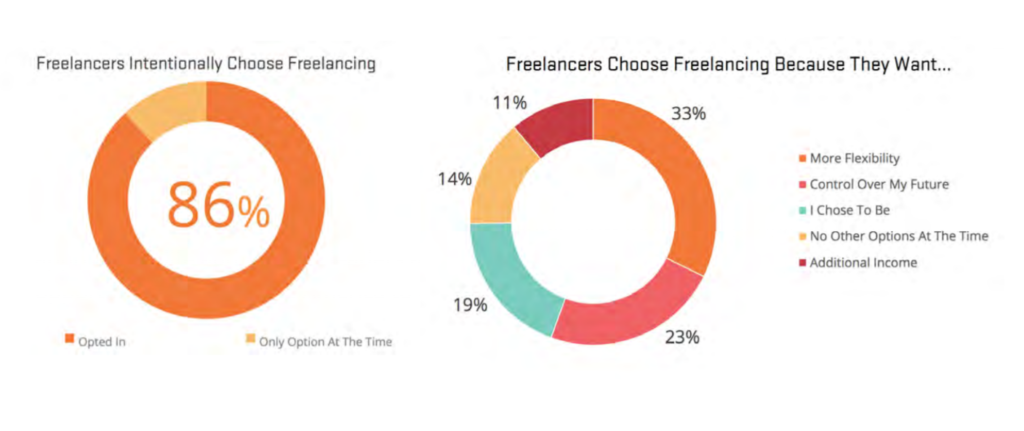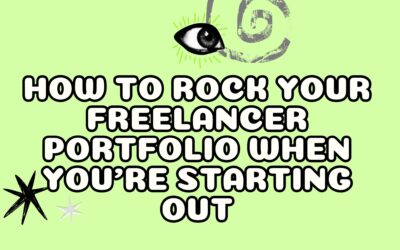Making calls has never been my forte.
I’m one of those people that would rather take any other avenue than to actually speak to a real person at the end of the phone.
All those pauses.
All those missed cues.
All those times you speak over each other. It’s cringey, right?
But, unfortunately, it’s a necessary part of being a freelancer. Clients are going to want to put a voice – or a face – to a name and email address.
And don’t you want to put a voice and a face to them, too?
The best relationships I have with clients are the ones I speak to regularly on the phone or via Skype.
That doesn’t mean I speak to them every week or they check up on me at every opportunity, it simply means we have a catch up every now and again to see where we’re at and where we’re going.
Why does this matter?
Because it helps you consider each other as humans.
It helps you consider your client as a real person that needs your help, and it helps your client think of you as something other than a disposable resource.
It’s a win-win situation. A necessary evil, if you will.

The vast majority of freelancers choose to go freelance to have more control – but that still means picking up the phone every now and again.
So if you’re currently quaking in your boots at the thought of picking up the phone and having a real life conversation with someone, here’s how you can ease the pain (and the cringe).
Go in Prepared
First things first – prepare, prepare, prepare.
Clients can tell when you rock up to a call not knowing where it’s going and what you’re supposed to do.
Instead, you want to put yourself in a position where you’re in control; where you’re the driver of the conversation so you know exactly what to expect and when.
There are several steps I take to do this.
Step 1: Research the client
Sure, the client will probably tell you a bit about themselves while on the call, but you want to go in knowing as much as you possibly can to begin with.
The kinds of things you research will depend on what kind of freelancer they’re looking for, but there are a couple of ways you can get started, whatever the aim of your conversation.
- Research their website – who are they and what do they do?
- Research their social media channels to find out about their presence and the type of customers they target
- Research the person you’ll be talking to, either via the ‘About’ page on the website or via LinkedIn
- Research how you can help them with your craft (if you’re a designer, look at their logo and other collateral; if you’re a writer, look at their blog and copy, for example)
This will help you know what the client is ultimately looking for and you’ll therefore be able to present yourself in the right way.
NB: If you’ve set up the call with the client already, it’s okay to ahead and connect with them on LinkedIn. You want to reach out and create as much of a connection as you can, especially if you’re up against other freelancers for the gig.
Step 2: Prepare Your Own Spiel
I’ve lost count of the amount of times I’ve hopped on a call with a client and the first thing they’ve asked me is “so tell me a bit about yourself and what you do” and I’ve absolutely frozen up.
It’s not fun talking about ourselves, is it?
But again, it’s a necessary evil. The client wants to know just as much about you as you do about them.
I like to jot down some bullet points that include the kind of clients I help, any key pieces I’ve written, and any major milestones I’ve reached so I can breeze through them on the call.
If you want to take it a step further, you can also prepare a short presentation that highlights the key things you do and your major accomplishments with other projects that the client can flick through in their own time.
Step 3: Dig Deep to Find Out What You Know
The aim of a client call is to find out everything you can about the potential project, the client, and whether you’ll be a good fit together.
In order to do that, you need to know exactly what the project involves and what your role will be.
I find it helps to have a list of questions laid out that you can ask the client and fill them in as you go. Some freelancers will have a pre-written questionnaire they fill out on call, but I like to change up the questions depending on the project and the client.
You might want to include questions like:
- What is the end goal of this project?
- How do you see us working together on a daily/weekly/monthly basis?
- What is your budget for this particular project?
- Do you have any examples of competitors’ logos/blogs/social media channels that you admire?
The more information you can find out, the quicker you’re going to know if the client is someone you want to work with.
They’ll obviously have questions for you, too, which brings me on to the next part of the process…

Lay Out Your Boundaries
Just like you’ll have questions for the client, the client will also have questions for you – sometimes a lot of questions.
It’s easy to feel nervous when they start firing questions you weren’t prepared for at you, but if you prepare and go in knowing what you need to find out, things will be easier.
You can expect clients to ask questions like:
- What’s your working process like?
- Can you give me an example of a project that you’ve worked on in the past that’s similar to this?
- What are your rates for this kind of work?
But there will often be other questions unique to the client and the situation that can throw you off guard if you weren’t expecting them.
And, of course, we can’t predict everything.
So what happens in that situation?
The best thing you can do is be open and honest. If it helps, you can write down your rates and working process on a sheet of paper to encourage you while on the call (I often find my mind goes completely blank when I’m asked the simplest of questions).
Otherwise, just remember that you’re the person who is in control of your rates, your work, and your process.
You’re the person who knows the most about those things in your business because you set them up.
Clients aren’t out to stitch you up.
Client calls aren’t a test.
Instead, think of it like a matchmaking session, where you’re both figuring out if you’re right for each other.
To do that, you need to be as honest about your business as possible and open up as much as you can to the potential client.
Follow Up
You might find that you get a huge surge of adrenalin when you get off a call from a potential client (I can’t be the only one), so it’s important to act quickly before your mind starts to black out what actually happened during the call.
I like to do two things when I’ve come off a client call:
- I send them an email thanking them for their time and recapping what we spoke about.
- I’ll lay out the next steps if we’ve decided to work together, or I’ll share my details again and my schedule if they want to do a follow up call or reach out again.
This keeps your call fresh in the mind of the client and solidifies your professionalism as a business provider.
Don’t Beat Yourself Up
Of course, not every client call is going to end with you landing a brand spanking new client.
Sometimes, the client will speak to a few other people and go with one of them, and you probably won’t know the reasons why.
Usually, it’s just a case of there being a better fit out there, so it’s important not to beat yourself up about it.
It’s likely that, if the client decided to go with someone else, they weren’t the right client for you – especially if you’ve had a deep and meaningful “matchmaking” session by following the steps above.
So tell me, how will you plan your next client call differently to seal the deal?






Hey Lizzie!
I only recently started getting on calls with clients. It sounds awful, but I used to put them off because I was so terrified about talking to them on the phone! I only did my first one about six months ago. It was nowhere near as bad as I expected, but I’m definitely going to use your tip on preparing for questions before the call comes around!
Awesome post as always 🙂
Elise recently posted…How to Increase Your Freelance Writing Rates
It can be incredibly daunting, right?
I also tried to put them off when I first started freelancing. But once you get a few out of the way and you realise nothing bad is going to happen, it gets easier!
So glad you liked the post 🙂
Hey Lizzie,
Great post, as always. I have a question, though. What do you recommend for freelancers who work internationally? Picking the phone can be very expensive, so we’d have to convince the potential client to talk to us via Skype, right? Or is there another way?
Anyway, thanks for the input! 🙂
Pİnar Tarhan recently posted…Writing for Free: Everything Writers Need to Know About Writing for Free
Hi Pinar! Yup, I’d recommend Skype. In fact, I mainly do all my client calls, whether they’re video or not through Skype as it’s easier all round!
I’ve sometimes done Google Hangouts with clients, but Skype is still my favourite.
Hope this helps!